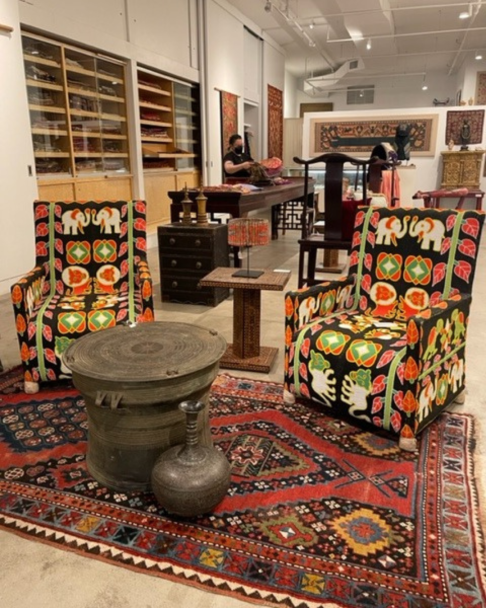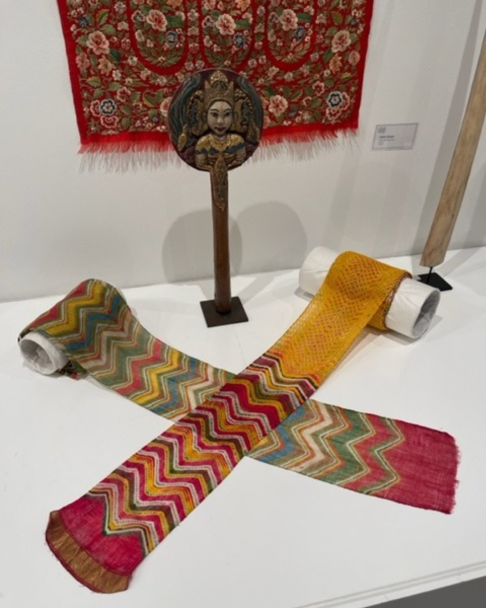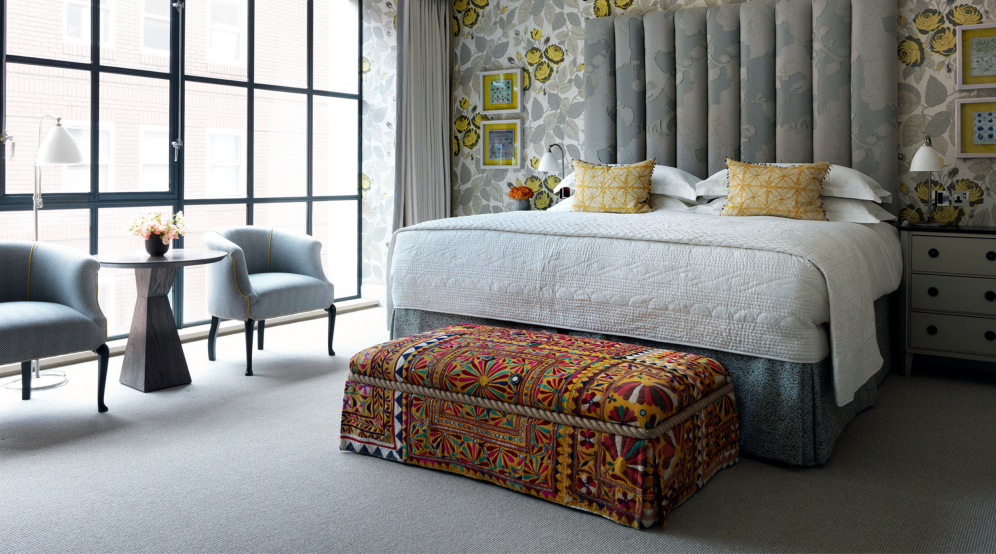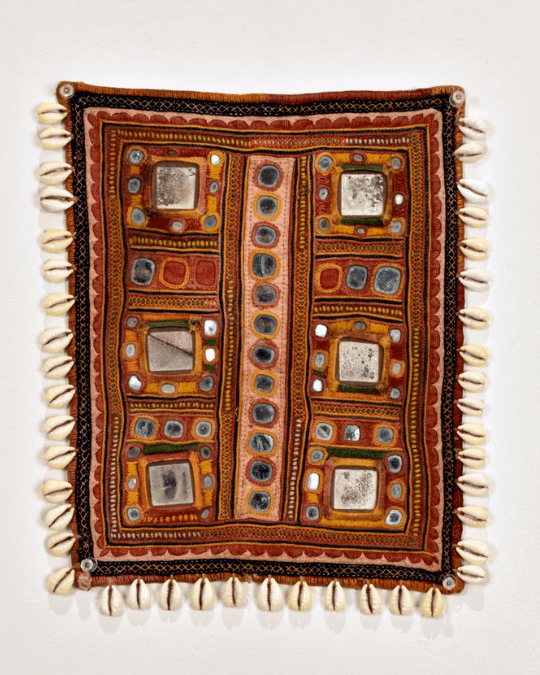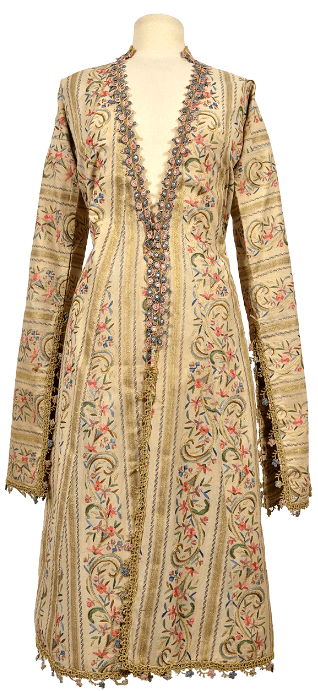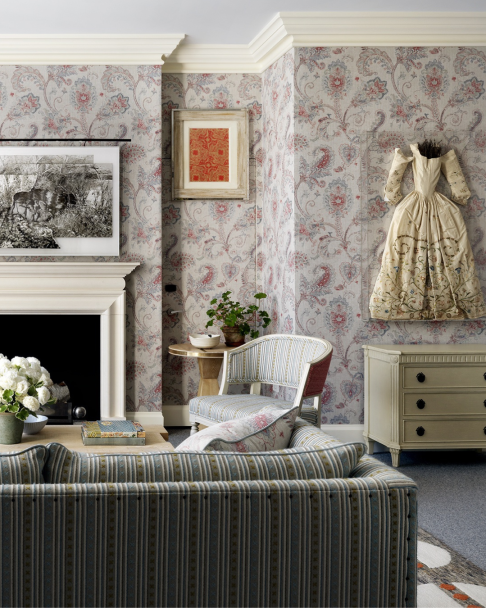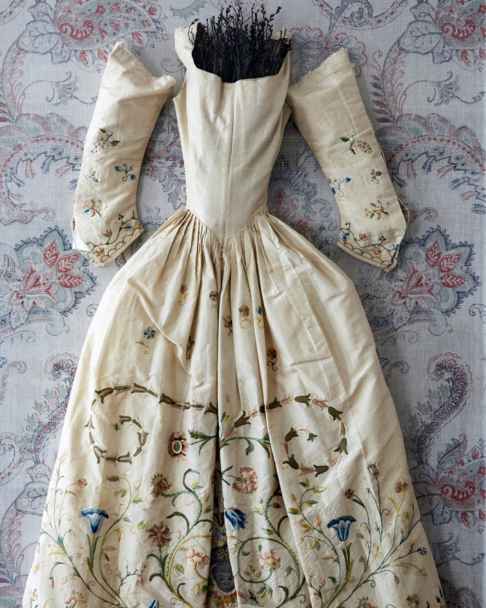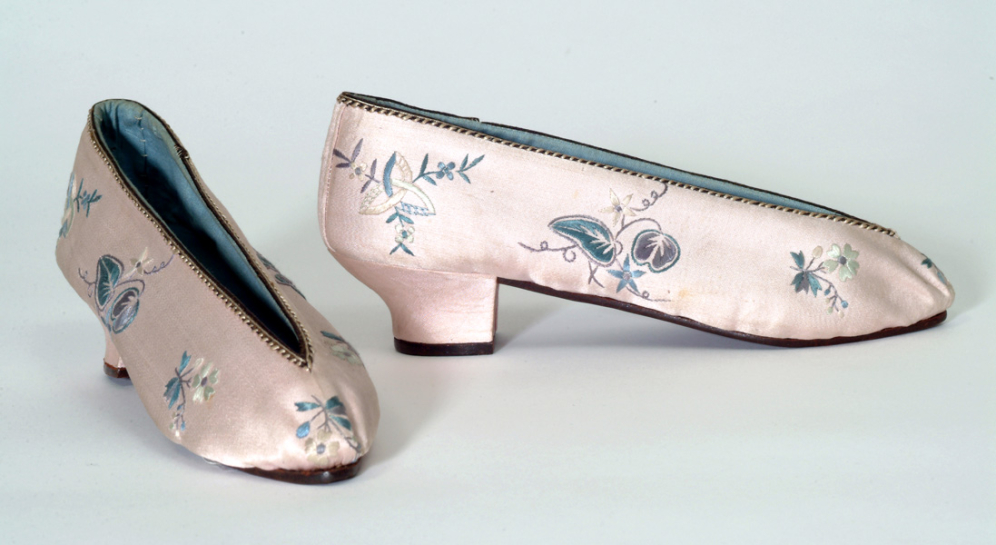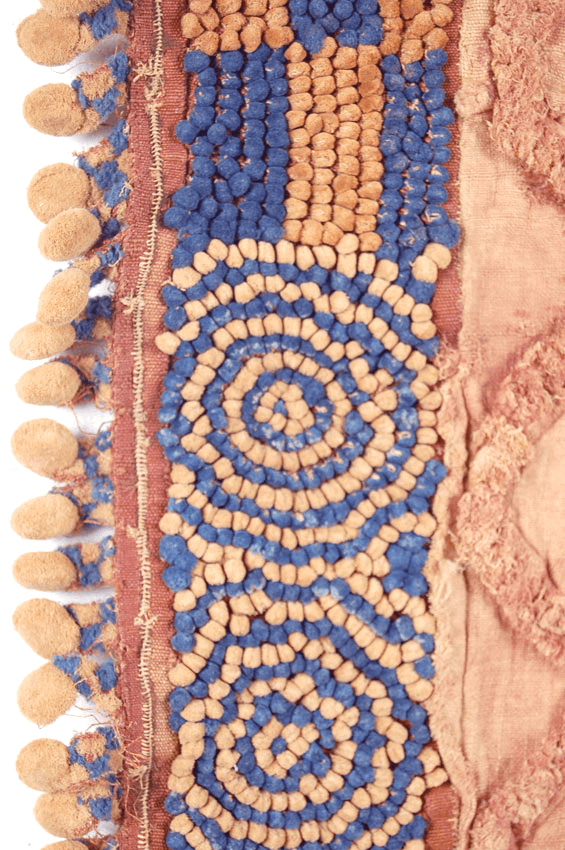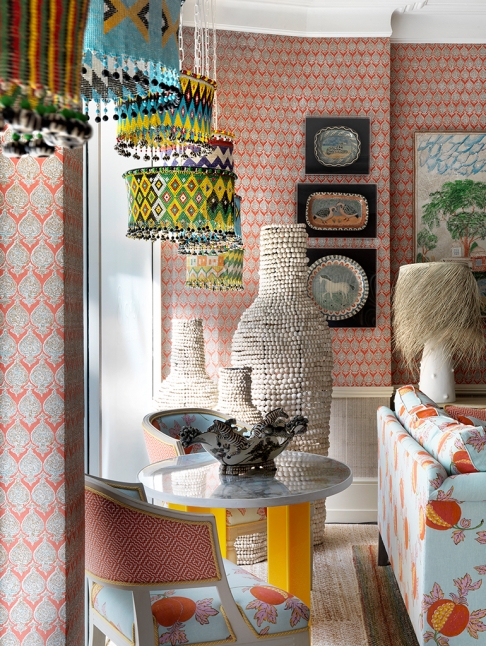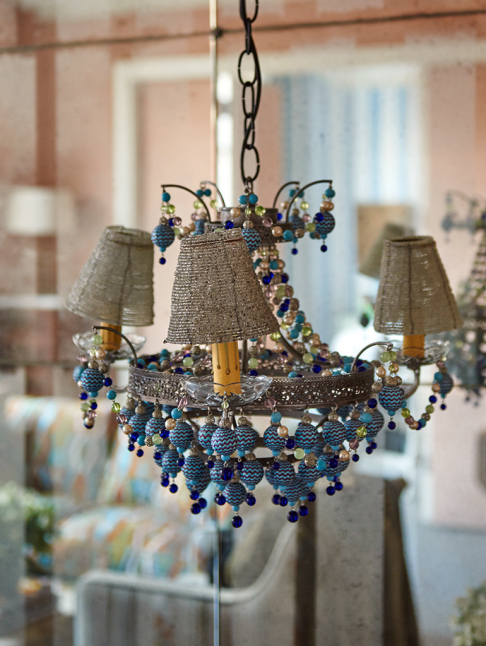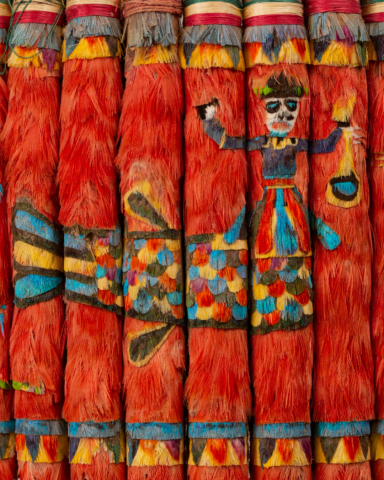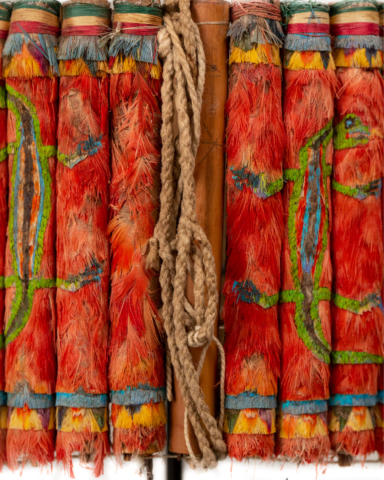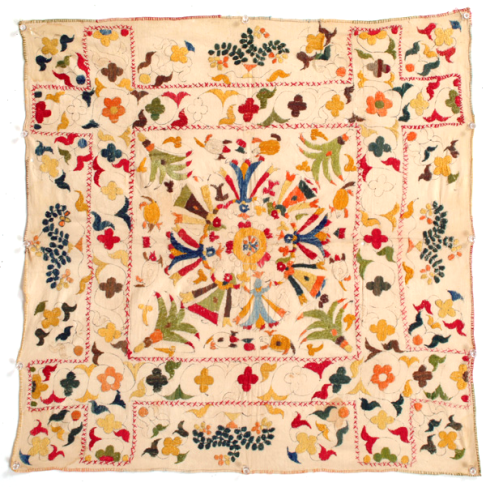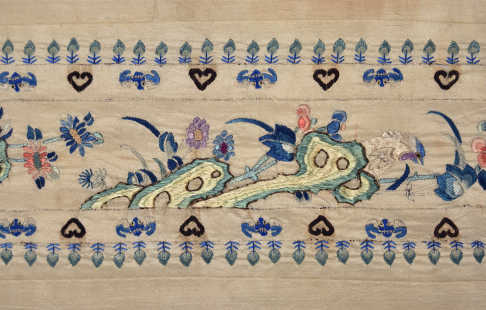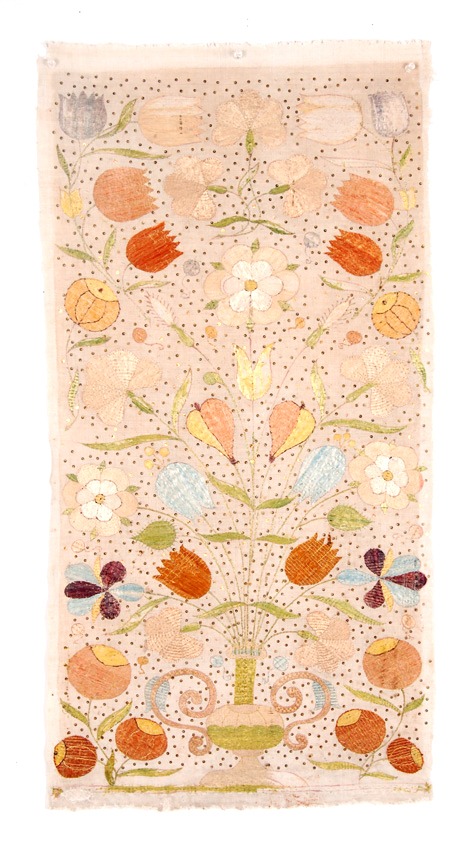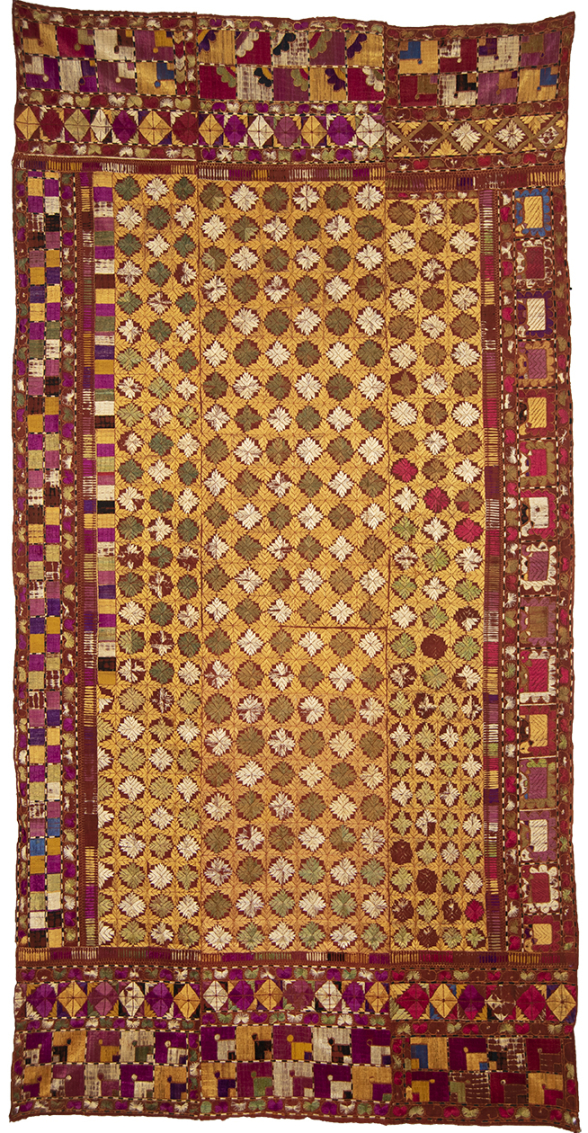
Out and About: Sarajo
We’re going ‘Out and About’ in New York. Take a five minute walk from Crosby Street Hotel and you will stumble upon Sarajo. Here you will find thousands of one of a kind items from all around the globe, from ancient textiles and antiques to decorative objects, costumes and art. We’re always looking to find unique treasures for our interiors so join us as we go on a hunt today.
At our Design Studio, we get inspiration from textiles, designs and art from the past. We love to recycle and repurpose textiles and source pieces which tell a story. At One Denman Place, the main focus of this apartment bedroom is an extra large end of bed stool (EBS). It has been upholstered in antique fabric, with embroidery and small shimmering mirrors that add character and movement.
At Sarajo we discovered some Banjara Square With Mirror Work which has a similar history and design. This piece was made in the 20th century.
In this residential project, we have used antique blankets to cover the dining chairs. Their textures and bright colours add so much character to the scheme.
The bright stripes and sturdy threading reminds us of this Coca Bag we found. Its sarong fabric could easily be used for details on a chair.
Believe it or not, this Embroidered Turkish Anteri was worn for manual labour. How we wish we could wear something like this when installing a room! This anteri is of high quality and can be dated with certainty to the end of the 18th century.
It reminded us of the Meadow Suite at Crosby Street Hotel where there is an embroidered antique gown. It’s one of our most cherished pieces.
We also found these embroidered Lotus Shoes For Bound Feet. They would go well with our antique gown.
It’s no secret that we love to add unusual textures and layers to our schemes. This Kuba Ceremonial Skirt incorporates a variety of techniques such as applique, tufting and beading.
It strikes a resemblance to our cowry shelled and beaded lighting fixtures, as we create these from antique Kirdi skirts. To see how we use beads in our designs click here.
This lampshade caught our eye. Its folk-like characters remind us of the story behind our Mythical Creatures collection with their whimsical and playful style. Its original use is a feather shoulder ornament that would have been worn during a festival dance in 19th century Bolivia.
We hope you enjoyed coming along to Sarajo with us. Visit the website here to see more of their collections and if you’re in New York, join us for a refreshing drink at The Crosby Bar.

